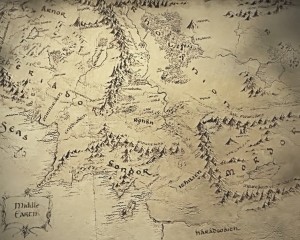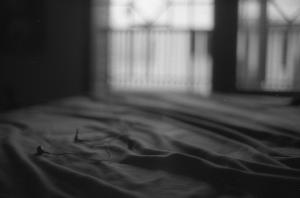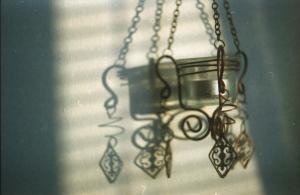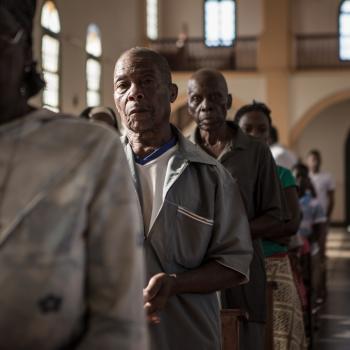 I’m reading The Lord of the Rings trilogy for the first time. I inwardly cringed when I wrote that, as I cringe whenever anyone asks me what I’m reading right now.
I’m reading The Lord of the Rings trilogy for the first time. I inwardly cringed when I wrote that, as I cringe whenever anyone asks me what I’m reading right now.
Despite his reputation among the beloved Inklings and many others I admire, I’ve always lumped Tolkien in with Dungeons and Dragons and Renaissance fairs, or at least with fanatical teenaged boys.
The Peter Jackson adaptations didn’t do much to convince me otherwise. They came out when I was in graduate school, and when I saw them I was unmoved. I realize now I was mostly uncomprehending—so much that gives the story its emotional heft is necessarily glossed over in whispers and asides—and distracted by the violence.
Jackson’s realization of the molting, snorting Uruk-hai and their bloodthirsty hatred of all mankind (except maybe as dinner), is gut-wrenchingly convincing. I never imagined that the books were so full of joy.
In fact it, they are joyful, and also grim and violent, and they have made me, in my reading, strangely happy. I say strangely because the idea that a book could bring happiness seems unreasonably simple after a decade of calling books “texts.”
Maybe I’ve gotten too far from reading for pleasure and experience. I’m also married to a man who reads books with titles like The Protestant Work Ethic and Modernization and The Fear of Beggars (just two of his current summer reading selections left open on our dining room table) for fun.
But I was surprised to find myself, halfway through The Two Towers, happy, and longing for more.
All this was in my mind last week as I sat through forty-plus hours of training to be a catechist for three-to-six year-olds at my Catholic parish. The program we’re adopting, “Catechesis of the Good Shepherd,” purports to teach as Christ did, through signs and parables. They call it (beautifully, I think) “education to wonder.”
Every day, I sat in a room with a bunch of other grownups and pretended to be three years old while the formation leader read us scriptures in her most engaging, soothing, preschool teacher voice while drawing our attention to the most important elements: the water (slowly pouring from cruet to chalice), the light (candles lit and snuffed), the mustard seed (so tiny you could fit dozens on your fingertip).
Again and again, I was struck by our attraction to these elements, and how the simplest action, when performed deliberately and with care, acted as a sign that points to an overwhelming truth. One candle burning, extinguished, then burning again, tells a story anyone can understand, whether three or thirty-three years-old.
It establishes an imaginative framework big enough to hold the entire Christian story—the story of how something unimaginably large and all encompassing is contained and revealed by a single life.
The Catholic Church tells that story again and again, in every mass and through every liturgical season. And it doesn’t just tell it, but asks us to enter it ourselves. The Catechesis of the Good Shepherd extends that invitation even to three-year-olds.
But I wonder if it’s the best way, or even necessary. I might not have received all last week’s training in such a deep and meaningful way if I hadn’t been reading Tolkien at home. That reading brought pleasure first, but with the satisfaction came also a longing, a longing for a story that is true.
The Lord of the Rings prepared me to receive the symbols and parables of my faith again, and opened my imagination to their depth and grandeur.
In the same way, might catechesis, for my daughter, begin with her current fascination with Cinderella’s glass slipper? Could her fairytales build the scaffold that will hold the Christian story—strange, violent, joyful, and true?
This post was originally published on July 10, 2009 with the title Education to Wonder.
Jessica Mesman Griffith is a widely published essayist and the author of the memoir Love & Salt: A Spiritual Friendship in Letters, winner of the 2014 Christopher Award. She lives in Northern Michigan with her husband, writer David Griffith, and their two children.











